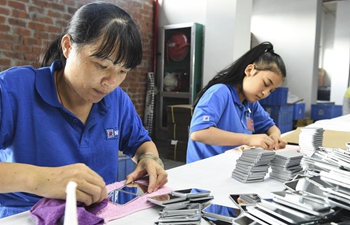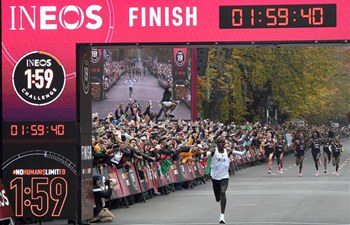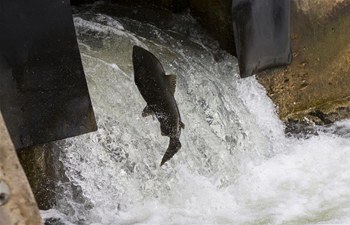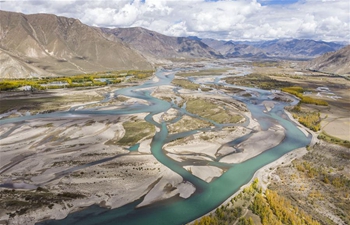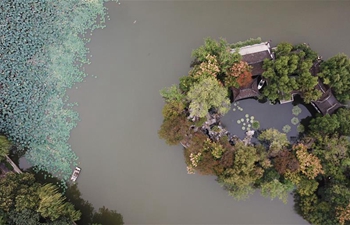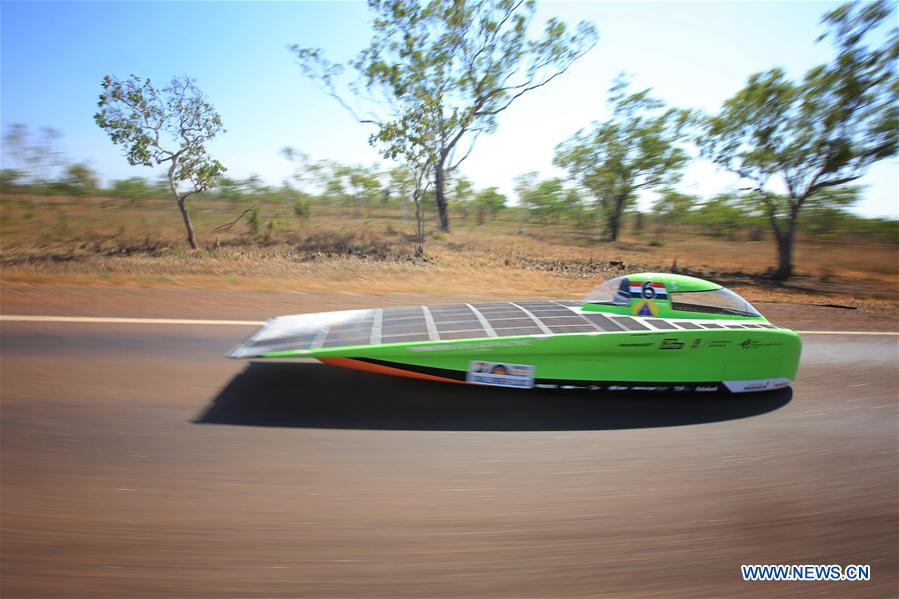
Top Dutch Solar Racing team car with pole position starts the race during the World Solar Challenge in Darwin, Northern Territory in Australia on Oct. 13, 2019. (Photo provided by Bridgestone World Solar Challenge 2019 via Xinhua)
DARWIN, Australia, Oct. 13 (Xinhua) -- 44 teams from the world took to the start line at State Square in Darwin, the capital city of the Northern Territory in Australia on Sunday for the 2019 Bridgestone World Solar Challenge.
As the world's biggest solar challenge, the event began in 1987 and is a 3,000km endurance adventure which includes one of the world's harshest environments-the central Australian desert, which is held once every two years. Most of the teams are fielded by universities or corporations.
It will finish on October 20 in Adelaide, the capital city of the state of South Australia with the Event Awards Ceremony to be staged on.
Chris Selwood, Event Director, told Xinhua on Sunday morning the biennial World Solar Challenge seeks to inspire some of the brightest young people on the planet to help foster the development of sustainable transport.
"The motivation is environmental and in many ways, it's more relevant today than it was in 1987, which was the first event because the motivation then was freedom from fossil fuel. The motivation now is how we operate in a carbon-constrained world." He said.
According to Selwood, solar collectors on the tops of the cars were originally limited to 8 square meters. However, with more efficient conversion leading to faster cars, this was dropped to 6 square meters in 2009.
And in the last edition two years ago, the allowable solar collector area was dropped to just 4 square meters of silicon cells for the single-seat Challenger-Class cars, and 5 square meters for the more practical Cruiser-Class cars with at least two seats.
"It's approximately a five-year-cycle that we have changes to the regulations because we don't want people just copying previous designs. We want them to come up with their own idea," said Selwood.
First-time Challenger Class team, Top Dutch, from The Netherlands in 'Green Lightning', had the honor of leading the field on Sunday as they earned the right to pole position in Saturday's time trials when no other team was able to breach the leader's average speed of 90km/h.
"As the world debates climate change and looks to find solutions to more sustainable mobility, these incredible young people are innovating and collaborating towards a better world," Selwood said.
"We wish all participants a safe journey as they chase the sun to Adelaide on this 3,000-kilometre, extreme endurance adventure. A once in a lifetime journey."
As a part of the event for more than 20 years, Selwood also shared his thoughts about the philosophy of it.
"The original and largest event of its type, it maintains its position by offering an adventure of epic proportions: crossing a continent in a car that uses sunlight as fuel."
Sun Shuttle Racing team car of Beijing Institute of Technology from China passes the start line during the World Solar Challenge in Darwin, Northern Territory in Australia on Oct. 13, 2019. (Photo provided by Bridgestone World Solar Challenge 2019 via Xinhua)
Ardingly College Solar team car of the United Kingdom passes the start line during the World Solar Challenge in Darwin, Northern Territory in Australia on Oct. 13, 2019. (Photo provided by Bridgestone World Solar Challenge 2019 via Xinhua)
Sunswift team car from University of New South Wales of Australia starts the race during the World Solar Challenge in Darwin, Northern Territory in Australia on Oct. 13, 2019. (Photo provided by Bridgestone World Solar Challenge 2019 via Xinhua)
